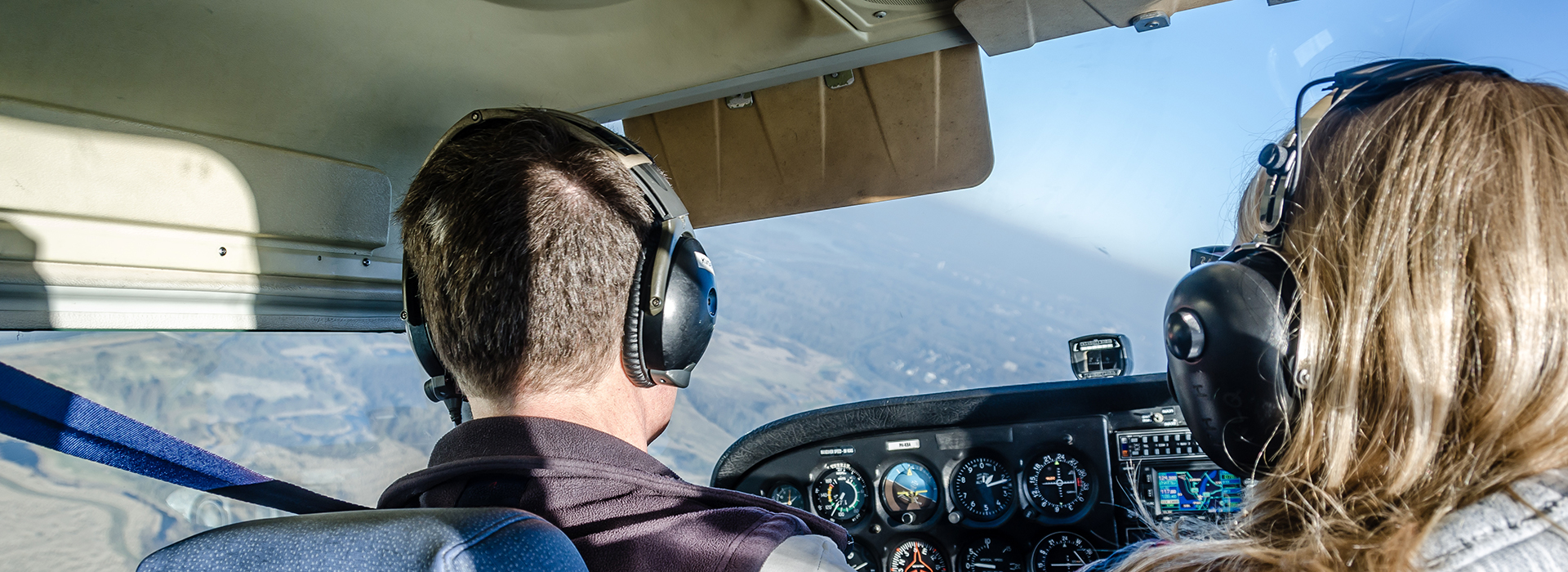Barbara Trautmann: Safety should be part of your DNA
After spending ten years as a flight instructor and commercial pilot, safety is part of Barbara’s DNA. Here she explains how her aviation experience helps in her latest role in the Material Handling Industry, why keeping an open mind is vital, and how change can be a golden opportunity to improve health and safety.


Barbara Trautmann
Senior Director Health, Safety & Environment, Kion Group
Q.
You spent ten years in the aviation industry where safety is the number one priority. What benefit has that had to your current role, and how can safety become a top priority for all industries?
The need to be aware of the risks and learn how to reduce and control those risks is critical in aviation. So safety has become an integral part of my professional life, and I have applied and implemented those skills in my current role, working for an internationally operating company providing forklift trucks, warehouse equipment and supply chain solutions. Safety principles are valid to all industries. It’s a question of transforming those principles, so they are relevant to the industry you are in and enhancing those skills which, in my case, include quality and environmental management. Critical to success in any efforts to reduce accidents and improve health and safety is developing a good safety culture. As in aviation, a rules-based approach to compliance and certification systems, for example, is required to maintain safety standards. But when you apply these standards globally, there needs to be some flexibility to maximise impact. Workers in Europe are more likely to question and challenge new health and safety protocols, whereas, in Asia, employees are much more accepting of a prescriptive approach. As the pace of globalisation continues, we need to think of ways to anchor safety into an organisation’s DNA more effectively. Being aware of different perceptions of safety is a vital aspect, and then it’s a question of getting everyone involved and on board with safety improvements. You have to keep an open mind and be flexible to reach people, particularly on a global scale.
"As the pace of globalisation continues, we need to think of ways to anchor safety into an organisation’s DNA more effectively."
– Barbara Trautmann, Senior Director Health, Safety & Environment, Kion Group
Q.
Do you feel the pandemic has helped or hindered health and safety progress?
It was an exciting time for me professionally as I began my current role in the middle of the COVID-19 outbreak. So it was a steep learning curve initially and I had to hit the ground running. As we dealt with the immediate impact of the pandemic, it was necessary to prioritise and put some initiatives on the back burner. But it certainly helped raise awareness of health and safety issues. And as we have become more experienced in dealing with new health and safety procedures, other factors such as mental health issues are becoming more apparent. In a way, it’s opened more eyes to the complexity of health and safety programmes which is a good thing from a resource allocation perspective. It’s also had a welcome impact on helping to de-stigmatise mental health issues. Our growing awareness of how the pandemic has triggered mental health problems means it has become more acceptable to open up and talk about it. This is helping with transparency and accelerates our understanding of the long term issues. So while general health and safety awareness programmes have been put on hold while we deal with the pandemic, we have also learned a lot that can strengthen programmes in the future and have shifted health and safety from a nice to have to a must-have.
Q.
Where does health and safety sit in creating a sustainable business, and how can the vast amount of data gathered be better-utilised?
Creating a safe work environment for future generations is integral to the whole idea of business sustainability. It’s important to share best practices across different business disciplines continually. It doesn’t have to necessarily be HSE professionals alone that bring in fresh ideas; it’s essential to utilise all the talent that’s available. Advancements in technology and innovation can also significantly improve sustainability, particularly as new working practices evolve. Indeed, technology can accelerate our safety programmes and, to a certain extent, also simplify them, for example, by using virtual reality (VR) to simulate situations for training purposes. This is common in aviation for flight training, but it’s exciting to adapt that technology in a production-related work environment. In terms of data, a well-developed health and safety management system will utilise data as its foundation. But sometimes programmes need a jolt to kick-start them to the next level. So it’s all about using data in smart ways to address specific pain points rather than rolling out a blanket health and safety programme. Using data in this way can also help divert much-needed resources to health and safety areas that need particular or more immediate attention.
"The need to be aware of the risks and learn how to reduce and control those risks is critical in aviation. So safety has become an integral part of my professional life."
– Barbara Trautmann, Senior Director Health, Safety & Environment, Kion Group
Q.
What are your three top learnings for a successful health and safety programme and how would you inspire others to take on these challenges?
I would say, first and foremost, is accept you are not an island. Excellence in health and safety performance relies on having an inclusive approach: you need management’s involvement and engagement from a wide range of people. At the same time, you need those involved to lead by example and ‘walk the talk’. Secondly, you need to empower people through training and education to engage with safety and learn how to be safe as a team. For example, in a co-worker environment, you need to know how to pull together and work without putting people in danger. Finally, actively manage change. We know that change is inevitable and even accelerated, as we’ve seen with COVID. But rather than passively working through it, actively manage change by being agile and refocusing resources that drive through change where it matters most. It increases the workload, but seeing change as a golden opportunity rather than a dark threat is a much more effective health and safety vehicle as it puts you in control, rather than reacting, more often than not, too late. It’s not a question of having everything under control, but you can help mitigate the risks by having a plan B and C.
"Creating a safe work environment for future generations is integral to the whole idea of business sustainability."
– Barbara Trautmann, Senior Director Health, Safety & Environment, Kion Group
It’s also inspiring to drive change when the ultimate aim is to deliver a safer and healthier workforce. There’s great satisfaction and pride in achieving that and seeing the appreciation from people who can see the benefits and know that you care for their wellbeing. There are also so many more career opportunities for men and women now, with the scope of health and safety broadening out to require new skillsets such as technology and digitalisation. Nor do you always need formal training. My academic background is in aviation, but this offers a different sense of how to mitigate risk. The ability to offer different perspectives can enrich programmes. Other than considering whether or not you should wear high heels to work, the career opportunities in health and safety are huge!